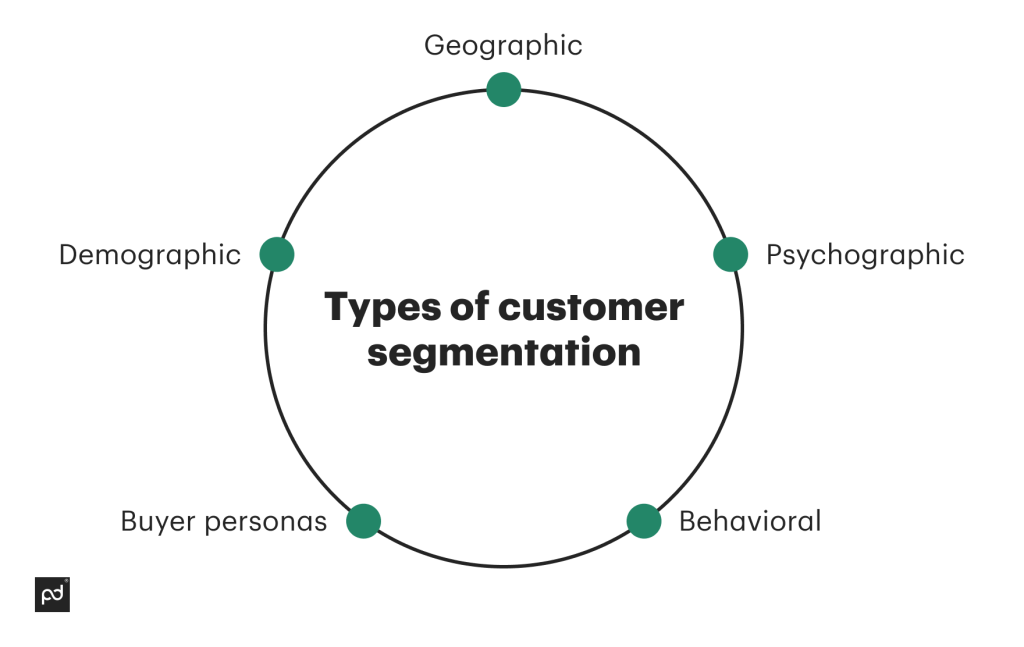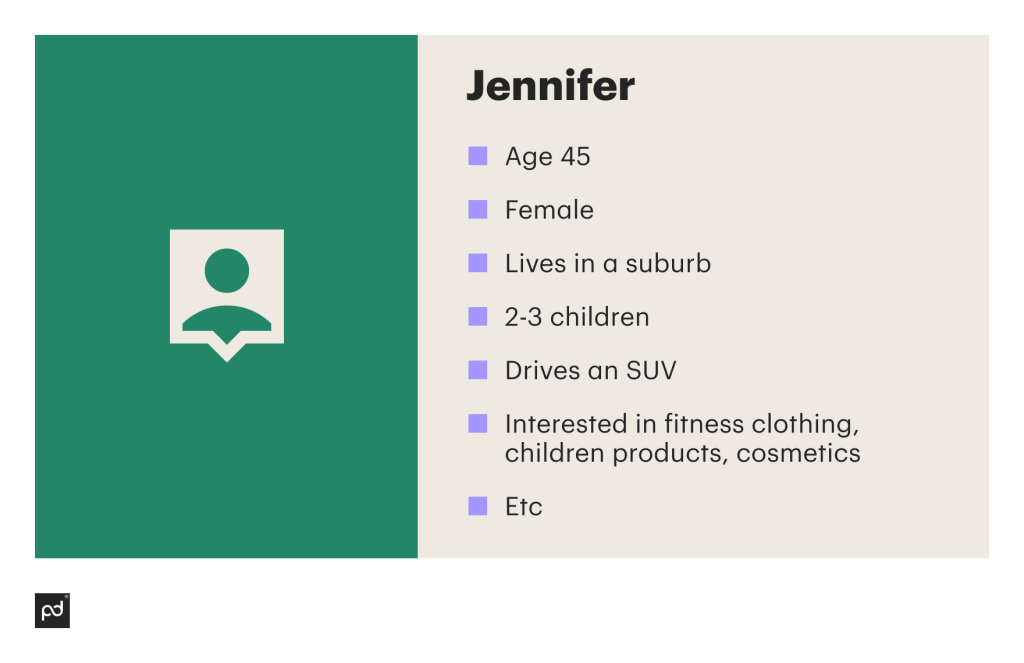“Know your audience” is probably the most trite phrase any marketer has ever heard.
Still, it is important, as even the best-known brands fail in this regard from time to time — remember that one year when Playboy stopped publishing nude photos? Didn’t go well.
The situation gets even more difficult if you have several products and a diverse customer base.
Understanding individual segments and choosing the right messaging for each is paramount for long-term success of your company.
In this article, we will describe the most common approaches to customer segmentation, where they are used, and how they can help improve conversions and optimize ad budgets.
What is customer segmentation?
Also called “market segmentation,” it is the process of separating your entire customer base into groups based on common characteristics.
In the case of a B2C business, these might include sex, age, marital status, etc.
B2B companies use parameters like the number of employees, job title, industry, and the like.
The goal is not just to break down the customer base — it is to form a number of smaller target audiences that have common needs and desires.
This helps at every step of the sales cycle, from advertising to closing deals.
There are many types of customer segmentation. They are typically used in conjunction to define the customers — and customer needs — more specifically.
These include but aren’t limited to:

Geographic segmentation
The definition is in the name. Depending on the country that they live or operate in, customers will have different needs and requirements.
For instance, when a company develops hospital management software for the US market, they must ensure it is HIPAA-compliant.
This attention to geography includes tuning the ads to the customers’ culture.
An example here: if you want to show a step-by-step process for people in Israel, you would be wise to present it from right to left.
Demographic segmentation
Separating potential customers by age, gender identity, nationality, etc., is called demographic segmentation.
It helps narrow down the messaging and develop products in a way that would find traction with the specific group.
This approach is more common in B2C businesses, although B2B companies also use it sometimes.
Psychographic segmentation
This method includes segmenting groups of customers based on their interests, viewpoints, attitudes, and activities.
It has become especially important in recent years, as people want businesses to actively show that company values align with their own (e.g. with regards to sustainable products).
Behavioral segmentation
This approach is especially widespread in digital businesses (e-commerce, mobile games, apps, etc.).
It implies segmentation of people by specific behaviors, like time spent on the app, product page views, engagement with specific features, and more.
Knowing these characteristics helps fine-tune advertising efforts (e.g. retargeting).
The assembled persona would look something like this:
Buyer personas
This is one of the possible end results of market segmentation.
A buyer persona is a composite portrait of a person from a certain group. It helps visualize dry customer data and give it a human face.

There will likely be several of these for every product.
A similar concept is an ideal customer profile (ICP).
This is an idealized version of a person that best fits each product and would therefore bring in the most profit.
ICPs are more common in a B2B setting and are mostly based on hard data.
They are especially useful when actively looking for customers (e.g. when cold contacting companies).
Benefits of customer segmentation
There are numerous advantages to breaking up your customer base into smaller subsets.
1. Improved customer relationships
Segmentation leads to better understanding.
Better understanding leads to improved customer experience through personalization and other means.
Improved personalization leads to more goodwill and up to 15% better sales.
Conversely, not getting it right can lead to a drop in conversions and customer lifetime value (CLV), as people switch to a competitor who gives them more of what they want.
2. Decreased cart abandonment
If you understand your customers, persuading them to complete the purchase naturally becomes easier.
For those who remain on your website, you can create a separate chatbot flow.
And prospects who have left can be targeted by ads or email chains that speak to their unique needs. Either way, this will result in you making more sales.
3. Better customer retention
A regular customer doesn’t need to be reacquired every time they make a purchase.
This makes them much more valuable.
And with a good segmentation process, you can make sure you keep them coming back by using ads, emails, promotions, and the like.
How customer segmentation is done
Although there may be differences depending on the situation each company is in, the general algorithm goes as follows.
1. Determine your goals
Of course, it is better to have an all-encompassing customer segmentation strategy, helping you decrease churn, streamline your marketing efforts, help your sales team convert leads, etc.
But doing so will require a lot of time for data collection and refinement.
It is much better to start small and scale later, when you are already getting value from what you have gathered.
For example, choose a single product and aspect (e.g. ad targeting) and work on it, then move on to the next.
2. Define your parameters
Now it’s time to choose exactly how to segment your target market.
The segmentation criteria depend on your products or services, business model, and goals.
For example, if you are selling a B2B software product and want to optimize your advertising budget (continuing with the example from the previous section), things like job title and the industry that the company works in will be at the top of the list.
3. Collect the data
Unless you are just starting out, you probably already have some useful information on hand.
There are many ways to supplement it:
- Web tracking
- Surveys
- Contests
- Social monitoring/listening
- App data gathering
- etc.
Keep in mind that these data streams don’t exclude one another — a combination will likely bring about the best results.
Both quantitative (everything you can express with numbers) and qualitative data will be useful for segmentation.
The page view duration can show the drawbacks in your website content, but customer requests and reviews can help uncover their pain points.
To speed up the process, you can use third-party resources that streamline information gathering: survey tools, social listening apps, document templates, etc.
PandaDoc has plenty of them, including a product survey template and a market research presentation. They are free to use and have a lot of boilerplate text in place, so you only need to insert your own questions or numbers.
4. Create customer groups
Now it’s time to separate your customers into segments.
The intersections of the collected information will give you plenty of potential groups. They have to be:
- Sizeable. Generally speaking, small segments may be hard to work with and have little impact on profit (though with some niche products that focus is necessary, and the ROI is easily justified).
- Understandable. The groups should be easy to understand. This will save you time on using the segments in any way you want.
- Long-term. People’s behavior can change. Make sure you don’t have to redo your research every year.
This way, your customer segmentation process will bring actionable results.
Conclusion
Customer segmentation (market segmentation) means dividing your potential customers into subsets for easier understanding and targeting.
It can include many different approaches like geographic, demographic, psychographic, or behavioral.
But overall, it brings important benefits: better customer relationships, decreased cart abandonment, and improved customer retention. All of these lead to more sales.
To conduct customer segmentation, start with determining your goals.
Then define the parameters according to which methods you’ll use to group the customers, gather the data and complete the segmentation process.
And if you need ready-made templates for surveys or other documents, sign up for a PandaDoc demo and see how it can benefit your business.
Disclaimer
PandDoc is not a law firm, or a substitute for an attorney or law firm. This page is not intended to and does not provide legal advice. Should you have legal questions on the validity of e-signatures or digital signatures and the enforceability thereof, please consult with an attorney or law firm. Use of PandaDocs services are governed by our Terms of Use and Privacy Policy.
Originally published October 12, 2020, updated April 26, 2023


